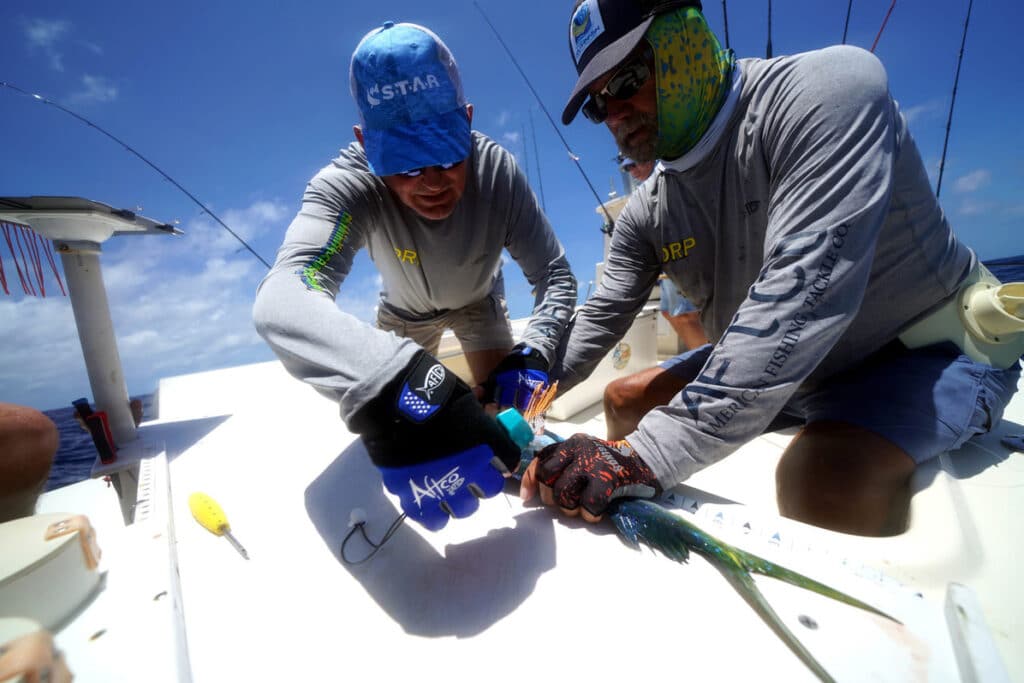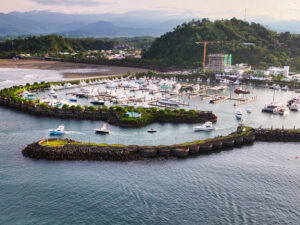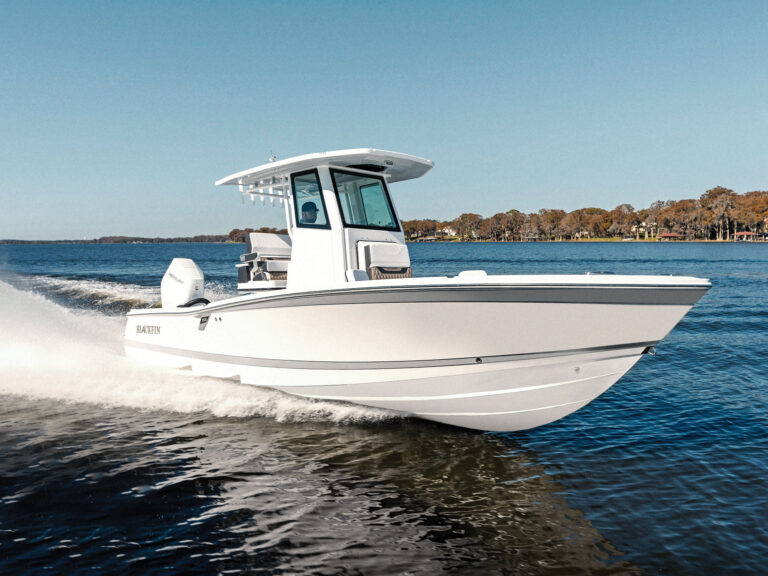
Perceptive fishing captains and dedicated recreational anglers are making a major change when targeting dolphinfish. They’re putting down the gaff and picking up a tagging kit. The tasty, high-flying mahi just aren’t around in numbers like they used to be—especially those big bulls that make your jaw drop.
And anglers want to know why.
Offshore captains and anglers have sounded the alarm, particularly in Florida, where catches have declined significantly over the last decade. The days of seeing a mess of big mahi pegged to a bragging board at the dock are long gone. Gaffers are much rarer now. And charter captains who rely on the annual Spring run aren’t sure how long or how many fish will show.
Researchers are racing to figure out why, but they’re having to overcome at least one major hurdle—important data are lacking. In particular, we’re talking about an absence of assessment data related to western Atlantic stocks. Unlike yellowfin tuna or blue marlin, mahi don’t have numerous stock assessments to turn to for accurate estimates of their numbers. The Puerto Rico dolphinfish complex doesn’t have an assessment at all.
Tag Teams
Anglers have different theories for the decline in dolphin. Some are certain it’s related to overfishing at the commercial or recreational level, both locally and worldwide. Others suggest that the vital habitat for dolphin is degrading. One other possibility is that mahi are traveling in new or different routes across the Atlantic, possibly because of warming waters.
The Dolphin Research Program aims to learn exactly where dolphinfish travel, relying on recreational anglers to tag dolphin to better understand their life history, movements and population dynamics. The ongoing data coming out of the program is something that fisheries managers should be using to make well-reasoned regulations, and potentially serve as a catalyst to get serious about federal dolphinfish assessments.
Each year, the program celebrates its top dolphin taggers in different regions. The more tags in mahi the better, upping the chance for a tagged fish to be re-caught by a different angler in a different place. For 2022, the winners included:
Top Private Boats
- Don Gates, Killin’ Time II, 323 Tagged
- Dane Dellenbach, Knot Workin’, 52 Tagged
Top Charter Boats
- Jimbo & Rick Thomas, Thomas Flyer, 48 Tagged
- Willie Howard, Captain Willie’s Charters, 32 Tagged
Top Boats in the South Atlantic Bight
- Ed Kattel, Cool Cat, 90 Tagged
- Tim Heiser, Irish Wake, 26 Tagged
Top Boats in the Tropics
- Jeffrey Liederman, Sandman, 71 Tagged
- Gary Marshall, Wine Down, 50 Tagged
Top Boat in the Gulf of Mexico
- Robert, Bo, and Thomas Feliniski, Latitude Adjustment, 99 Tagged
In 2022, the program distributed $5,315 worth of gear and art to 68 captains and crews who tagged and released 1,741 dolphin. To qualify for the DRP year-end awards, a vessel needs to tag, release and submit at least 20 dolphinfish tag deployment reports to the DRP by the end of the year. The Dolphin Research Program, supported by the Beyond Our Shores Foundation nonprofit organization, added monthly tagging awards in 2023 for the top tagging vessel in a particular calendar month.
How to Tag A Dolphin

In May of 2022, Florida reduced its dolphin (20-inch fork length minimum) bag limit to 5 fish per person and 30 per vessel. The changes were welcomed by most anglers familiar with the dorado decline, but others hoped more liberal federal regulations (10 fish per person and 54 per vessel) would change to follow in Florida’s footsteps. Federal waters of the Southeast and Gulf are where the vast majority of mahi are caught, not state waters.
As it stands now, NOAA Fisheries reports that the South Atlantic dolphin stock is not overfished, relying on an exploratory assessment of the species in 2000. Many Florida offshore anglers would disagree, wanting to ask fisheries managers where the fish have gone and why the catch rates have dropped drastically.
To get your own tagging kit from the Dolphin Research Program, request one or support the organization by buying a kit for $25. A kit contains 5 individually numbered DRP dart tags, 5 corresponding postcard tagging cards with postage included, 1 official DRP tag applicator and 1 DRP sticker. Visit dolphintagging.com to see real-time data of different tag and capture locations.









